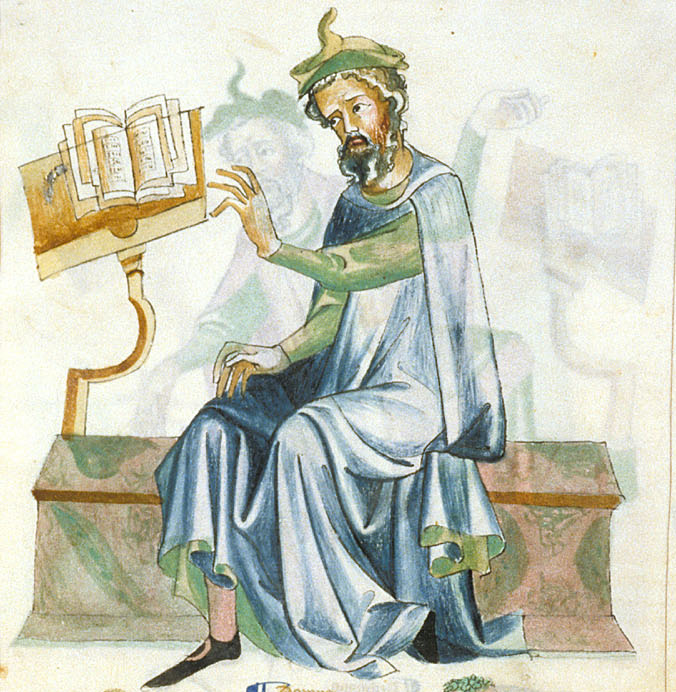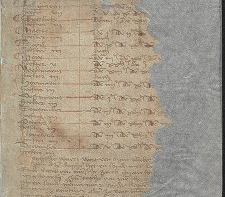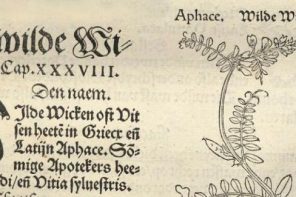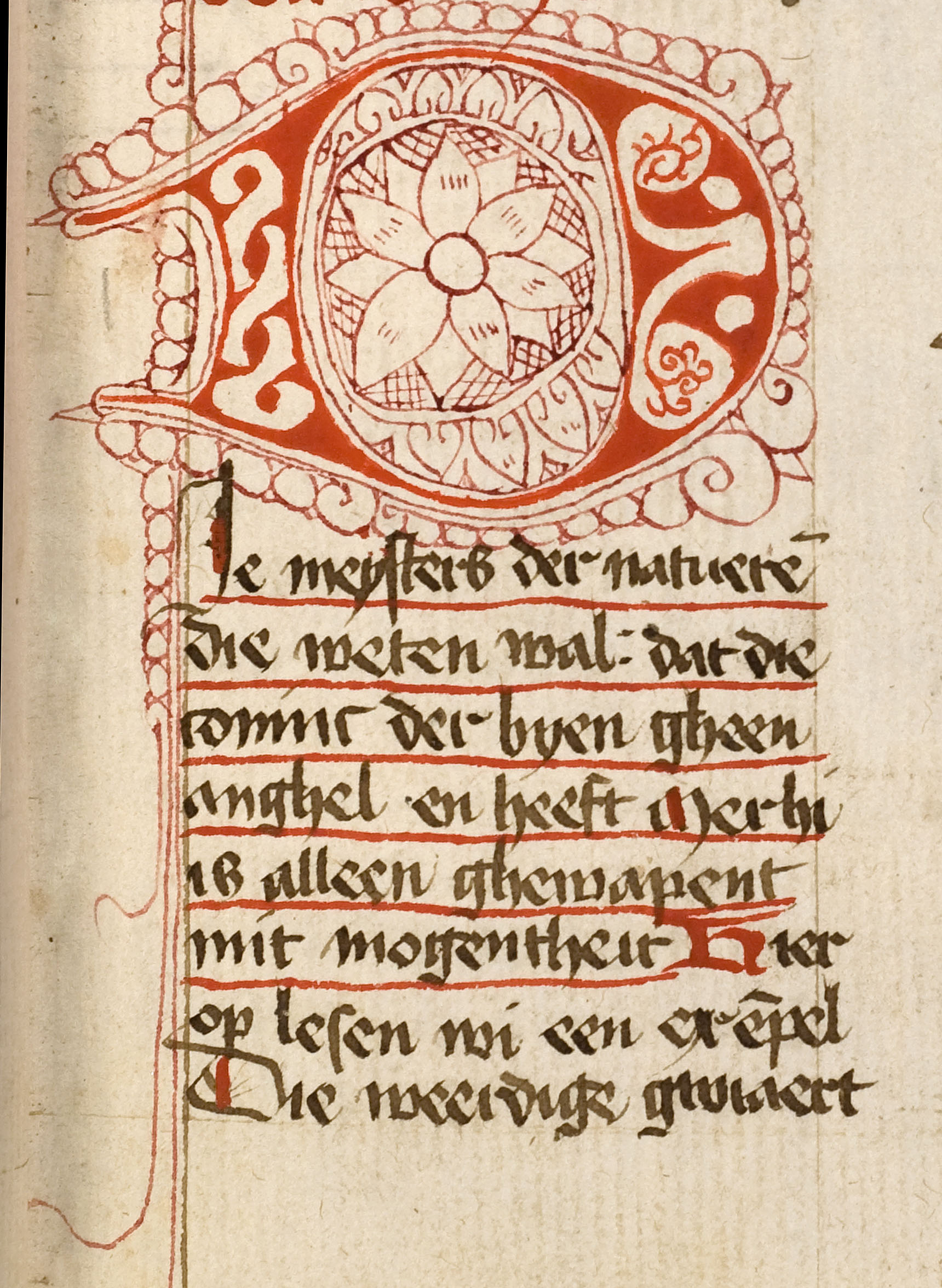Aberth, J., An Environmental History of the Middle Ages: The Crucible of Nature. London, New York, 2012.
Barnes, M.P., Runes: A Handbook. Suffolk, 2012.
Uit de recensie van E.J. Christie in The Medieval Review [tmrl@indiana.edu] 14.06.09: ‘Michael P. Barnes’ Runes: A Handbook is an introductory textbook based on courses taught in the Department of Scandinavian Studies at University College, London. It consists of eighteen chapters that range from the origin of runes through their development in England, Frisia, and Scandinavia in the Viking Age. It contains devoted chapters on topics of special interest like runica manuscript, cryptic inscriptions, and techniques of runic carving. Later chapters follow the persistence of runes as an object of antiquarian interest in the later Middle Ages and on into the sixteenth century as well as tracings their imaginative uses in politics and literature from the Icelandic sagas themselves to modern political evocations. As the market supports countless books about the magical “secrets” of runes, obviously intended for an audience of new age mystics, teachers looking for a serious and systematic textbook of runology may finally breathe a sigh of relief. Though it may never be common to teach runology as a class in its own right, this book would provide a useful dimension to courses in the literature of northern Europe in the Middle Ages or the history of Germanic languages.’
Campbell, E. en R. Mills (eds.), Rethinking Medieval Translation; Ethics, Politics, Theory. Cambridge, D. S. Brewer, 2012.
Dales, D., Alcuin: Theology and Thought. Cambridge, 2013.
Uit de recensie van E. Knibbs in The Medieval Review [tmrl@indiana.edu] 14.05.03: ‘In 781, Charlemagne invited an Anglo-Saxon schoolmaster named Alcuin of York to join his palace school. Alcuin eventually arrived and passed some seasons at court, before accepting an abbacy at St. Martin’s at Tours. There, he spent eight years writing volumes 100 and 101 of Migne’s Patrologia. He died in 804, a teacher to many and a friend to most. If the bare facts of Alcuin’s career do not align fully with his place in myth and legend, at least they leave room for imagination. Alcuin as the evangelist of Anglo-Saxon intellectual achievement–the savior of the insular legacy, without whom Bede’s learning could have found no outlet to the wider world– has become a time-honored tradition of Anglophone medievalist scholarship, and Alcuin boosterism will be familiar to most readers of TMR.
Alcuin: Theology and Thought is the most recent effort on Alcuin’s behalf, and the latest from Douglas Dales, an Anglican priest and a prolific author with many and varied interests. His book purports to be “a thorough and wide-ranging consideration of Alcuin’s spiritual and intellectual life as a teacher” (from the back cover). As such, it complements Dales’s earlier, more strictly biographical approach in Alcuin: His Life and Legacy (Cambridge: Cambridge: James Clarke and Co, 2012), by focusing more intently upon Alcuin’s intellectual and theological leavings.’
Darby, P., Bede and the End of Time Burlington, 2012.
Uit de recensie van S. DeGregorio in The Medieval Review [tmrl@indiana.edu] 13.07.10: ‘For over a decade now, a small contingent of scholars have been pushing through the thesis that Bede’s writings were the product of a deeply innovative and even daring mind. Toppling the older view that Bede was merely a compiler and hence unremarkable for his originality, such recent scholarship has exchanged the humble monk of Wearmouth-Jarrow for a prodigious and multifaceted auctor whose work rivaled that of the great fathers who preceded him, to whose level he had aims to aspire. In the introduction to an essay collection I edited in 2006, I dubbed this the “new Bede,” as a moniker for both the scholarly trend and the historical subject fashioned by it. The present monograph makes a forceful case for the validity of this paradigm in its wide-ranging and meticulous treatment of Bede’s writings on time. Like Bede’s exegesis, which until recently had lived under the cloud of the Ecclesiastical History of the English People, his magnum opus, the writings on time form another segment of the Bedan corpus where the author’s substantial achievements have yet to be fully repaid by exhaustive scholarly investigation. Darby’s study does much to redress this imbalance by showing that, here too, Bede was a truly innovative and original thinker.
Demaitre, L., Medieval Medicine: The Art of Healing, from Head to Toe. Santa Barbara, 2013.
Dillon, E., The Sense of Sound: Musical Meaning in France, 1260- 1330. New York, 2012.
Gilchrist, R., Medieval Life: Archaeology and the Life Course Woodbridge, 2012.
Jaritz, G. (ed.), Ritual, Images, and Daily Life. The Medieval Perspective. München, 2012. 
Uit de recensie van L. Kjaer in The Medieval Review [tmrl@indiana.edu] 13.06.11: ‘The present volume, on the whole, belongs to the more explicitly theoretical branch of medieval ritual studies. The contributions centre on questions about objects of art, paintings, statues, buildings, and their roles in ritualised practices. The third theme highlighted in the title “daily life” seems less prominent, but is perhaps meant to signal the contributors’ commendable interest in everyday ritualised behaviour as much as in grand ceremonial occasions. Thus while the anthology has a coherent, analytical core it also ranges widely in terms of the subject matter discussed by the individual contributors.
At one end stands Svetlana I. Luchitskaya’s interesting essay on “Pictorial Sources, Coronation Ritual, and Daily Life in the Kingdom of Jerusalem.” We do not hear much about daily life but the idea of integrating pictorial sources alongside the more commonly investigated legal and narrative sources for ceremonial occasions is very promising. One might wish she had had more space to unfold her analysis of the wealth of material she presents. Most of the essays, however, are focused on the later medieval and early modern periods. Pamela King uses Lacan and the 1984 Band Aidcampaign to offer new perspectives on the English mystery plays.
Commendably, King engages at the end of her paper with the argument that “this analytical approach to the imagined staging of medieval drama could be charged with being simply a detour to the obvious observation that scriptural plays are full of characters who act as audience surrogates.” She answers such doubting Thomases by explaining that “the important difference is… that gaze theory offers a way of analysing how these plays may work at a fundamental perceptual level that precedes the cognitive” (203).
The article by Joan A. Holladay is perhaps the best example of what can be achieved through the anthology’s triple focus on rituals, images and the everyday. It investigates the sculptures of the kings of France erected by Philip IV in his Grand Salle. Holladay discusses expertly the ways in which the hall and its statues may have been read variously at royal banquets, when serving as an antechamber for parliament or, finally, by the merchants doing business in the hall. The statues demonstrated the long line of Catholic predecessors of which Philip IV could boast, as well as reminding waiting parliamentarians of the antiquity of royal authority and merchants and their customers of the king’s role as guarantor of the peace that allowed trade to flourish. Here ritual, art and everyday life can truly be felt to flow together. […]
Medievalists who do not suffer from allergic reactions to discussions of Lacan and a liberal use of jargon will find much in this anthology that is interesting and thought-provoking.
Keersmaekers, F., Een gekruid verhaal. Een zestiende-eeuws handschrift met geneeskundige recepten. Dufel, 2011.
In de zestiende eeuw noteerde een vlijtige gasthuiszuster uit Geel talrijke geneeskundige recepten, gemaakt op basis van kruiden. Dit unieke handschrift, dat in dit boek gepubliceerd wordt, geeft een beeld van de ziekten waarmee men in die tijd geconfronteerd werd, en de middelen die men hiertegen bereidde. Na een uitvoerige inleiding, waarin het handschrift wordt besproken en gesitueerd in zijn tijd, wordt in dit werk de originele tekst gepubliceerd, met daarnaast een letterlijke omzetting én een ‘vertaling’ in ons hedendaags Nederlands. Achteraan volgt een uitgebreide woordenlijst, met daarin onder meer verklaringen van de oude termen die men voor de vele kruiden gebruikte.
Krötzl, C. en K. ustakallio, (eds.), On Old Age: Approaching Death in Antiquity and the Middle Ages Turnhout, 2011.
Lambert, S. en H. Nicholson, (eds.), Languages of Love and Hate: Conflict, Communication and Identity in the Medieval Mediterranean. Turnhout, 2012.
Metzler, I., A Social History of Disability in the Middle Ages: Cultural Conceptions of Physical Impairment. London, New York, 2013.
Uit de recensie van E. Buhrer in The Medieval Review [tmrl@indiana.edu] 14.03.04:
‘It is both fitting and welcome then that the major goal of Metlzer’s new book, A Social History of Disability in the Middle Ages: Cultural Conceptions of Physical Impairment (an installment in Routledge’s Studies in Cultural History series) is to “tease out from the many disparate sources some inkling of the ‘lived experience'” of medieval disabled people (1). Since few sources record the voices of the disabled themselves, this entails an investigation of the social attitudes and mentalities that can be gleaned from a dizzying array of legal, economic, and administrative texts, however Metzler certainly achieves this modestly stated goal. In four thematically oriented chapters, she explores how medieval laws, attitudes toward work and charity, and the physical consequences of aging, shaped the lives of people with physical impairments between roughly the 6th and 15th centuries. Due to the nature of the sources available and, I suspect, the project’s ambitious aims, the end result is as much a synthesis and reframing of previous work on these four thematic strands, as the product of Metzler’s own sustained engagement with a cohesive set of primary sources. But it is an interesting synthesis, which provides a broad yet meticulously detailed overview of the various ways that people could become disabled during the Middle Ages, the social positions they occupied, and the provisions that existed for their care.’
Noble, T. F.X en J. van Engen (eds.), European Transformations: The Long Twelfth Century. Notre Dame, 2012.
Partridge, S, en E. Kwakkel, (eds.), Author, Reader, Book: Medieval Authorship in Theory and Practice. Toronto, Buffalo, London, 2012.
Raguin, V.C., Stained Glass: Radiant Art. Los Angeles, 2013.
Winter, J.M., ‘Suiker in de Middeleeuwse keuken’. In: Jaarboek ‘de Oranjeboom (66). Breda, 2013, p.45-71.
Sacha Voogd





